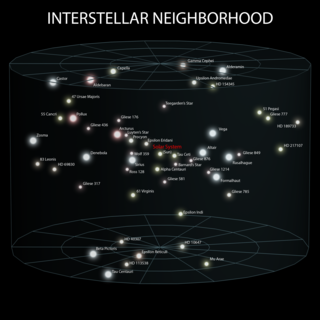 W
WA star is a spherical gaseous object comprising mainly hydrogen and helium, assembled under its own gravity, and able to produce energy through nuclear fusion. Stars exhibit great diversity in interesting properties such as mass, volume, space velocity, stage in stellar evolution, and distances from earth. This list contains many whose properties might be considered extreme or disproportionate.
 W
WBelow is a list of the largest stars currently known, ordered by radius. The unit of measurement used is the radius of the Sun.
 W
WThis list of stars that dim oddly is a table of stars that have been observed to darken and brighten in an atypical manner. An overall study of such stars has been presented.
 W
WIn astrology, certain stars are considered significant. Historically, all of the various heavenly bodies considered by astrologers were considered "stars", whether they were stars, planets, other stellar phenomena like novas and supernovas, or other solar system phenomena like comets and meteors.
 W
WNameExoWorlds is the name of various projects managed by the International Astronomical Union (I.A.U.) to encourage names to be submitted for astronomical objects, which would later be considered for official adoption by the organization. The first such project, in 2015, mostly regarded the naming of stars. In June 2019, another such project, in celebration of the organization's hundredth anniversary, in a project officially called IAU100 NameExoWorlds, welcomed countries of the world, to submit names for exoplanets and their host stars.
 W
WFifty-eight selected navigational stars are given a special status in the field of celestial navigation. Of the approximately 6,000 stars visible to the naked eye under optimal conditions, the selected stars are among the brightest and span 38 constellations of the celestial sphere from the declination of −70° to +89°. Many of the selected stars were named in antiquity by the Babylonians, Greeks, Romans, and Arabs.
 W
WThis list of nearest bright stars is a table of stars found within 15 parsecs of the Sun that have an absolute magnitude of +8.5 or brighter, which is approximately comparable to a listing of stars more luminous than a red dwarf. Right ascension and declination coordinates are for the epoch J2000. The distance measurements are based on the Hipparcos Catalogue and other astrometric data. In the event of a spectroscopic binary, the combined spectral type and absolute magnitude are listed in italics.
 W
WSome 53 stellar systems beyond our own, the Solar System, currently lie within 5.0 parsecs of the Sun. These systems contain a total of 63 stars, of which 50 are red dwarfs, by far the most common type of star in the Milky Way. Much more massive stars, such as our own, make up the remaining 13. In addition to these "true" stars, scientists have identified 11 brown dwarfs, and four white dwarfs. Despite the relative proximity of these 78 objects to Earth, only nine are bright enough in visible light to reach or exceed the dimmest brightness to be visible to the naked eye from Earth, 6.5 apparent magnitude. All of these objects are currently moving in the Local Bubble, a region within the Orion–Cygnus Arm of the Milky Way.
 W
WPi Orionis is a group of fairly widely scattered stars in the constellation Orion that constitute the asterism Orion's Shield or Orion's Bow.